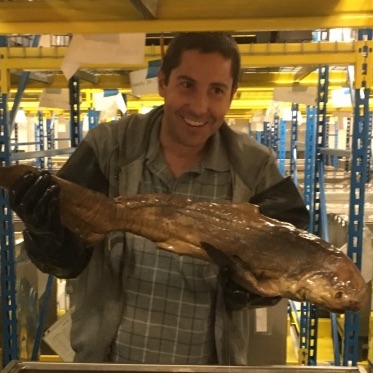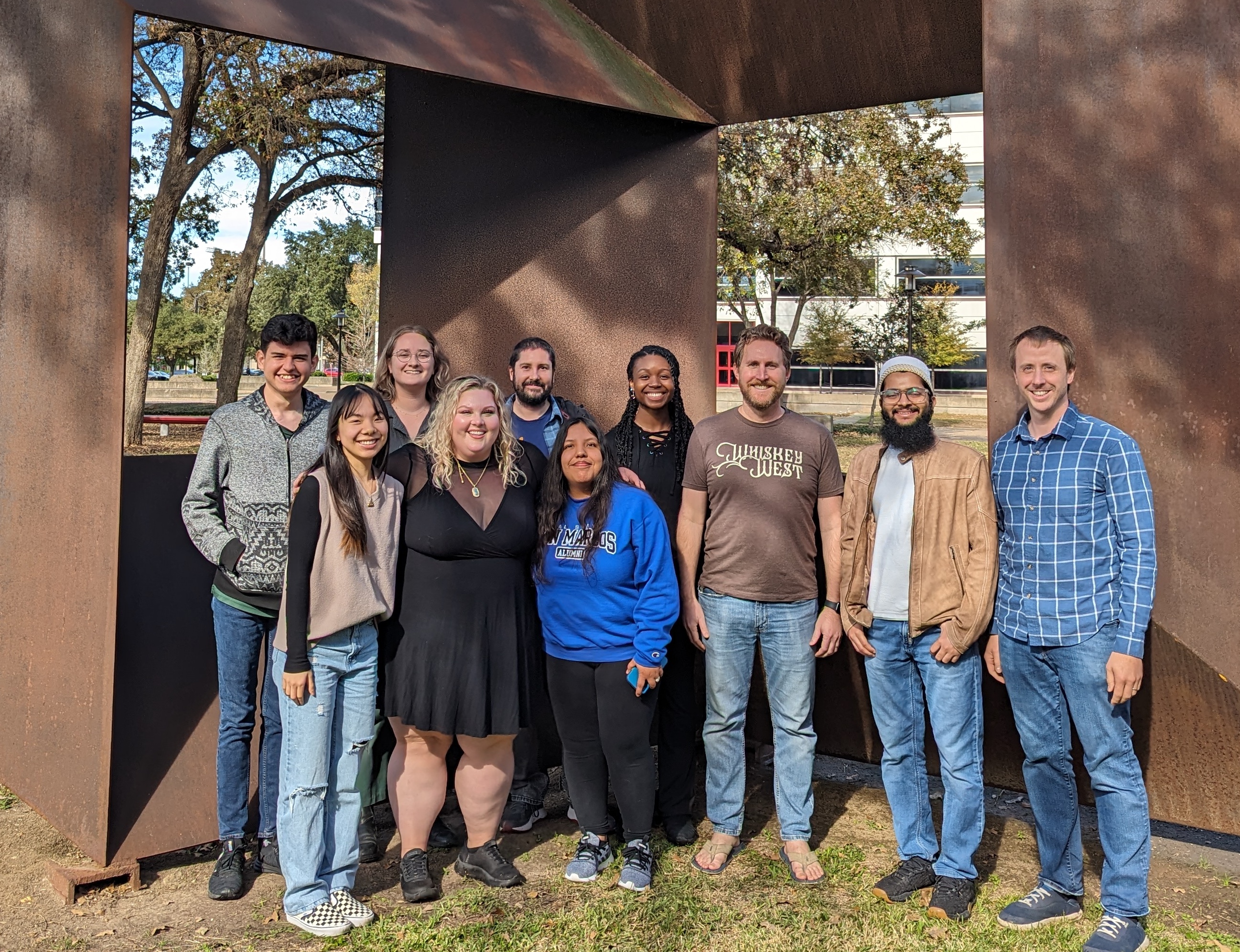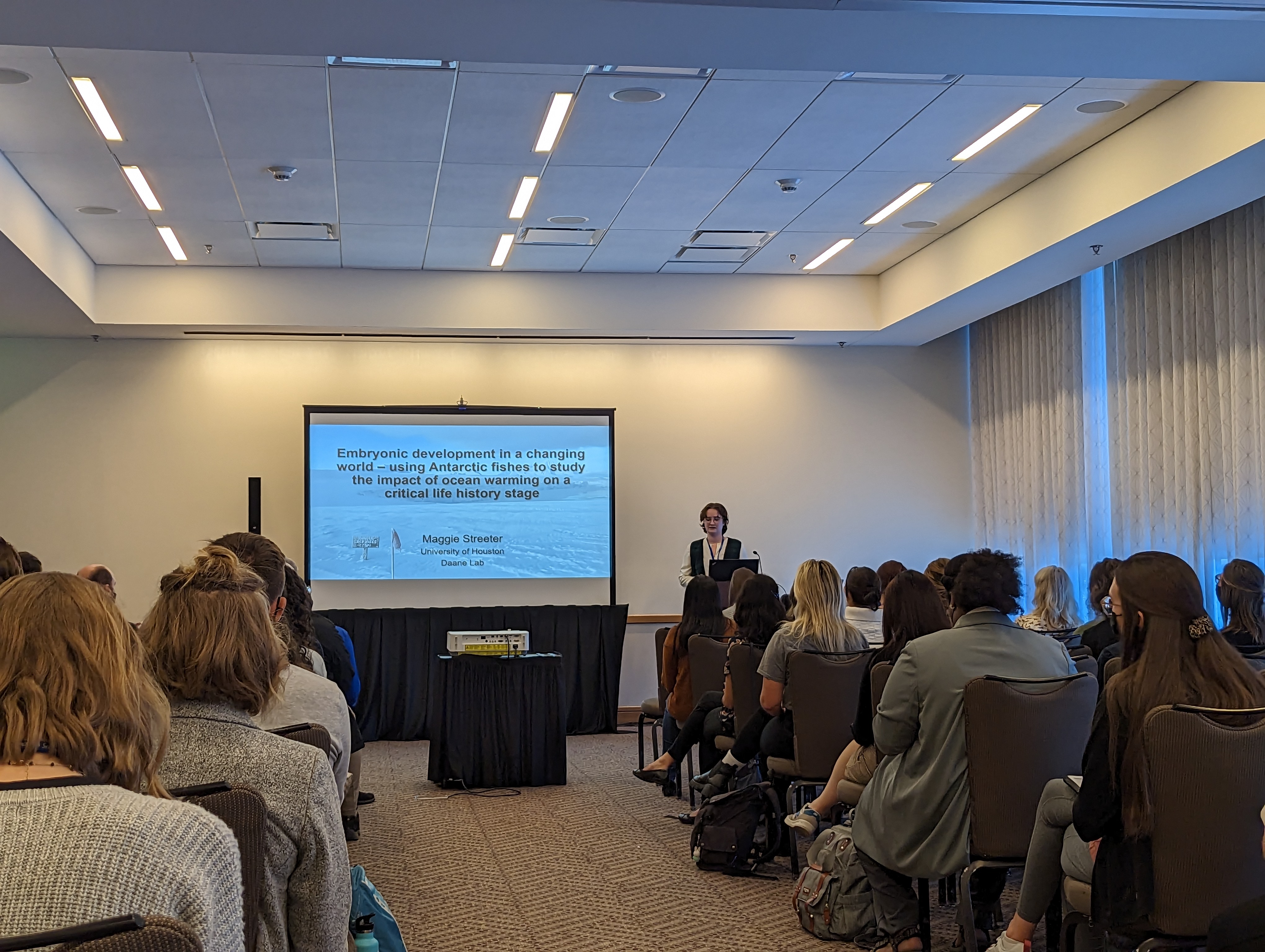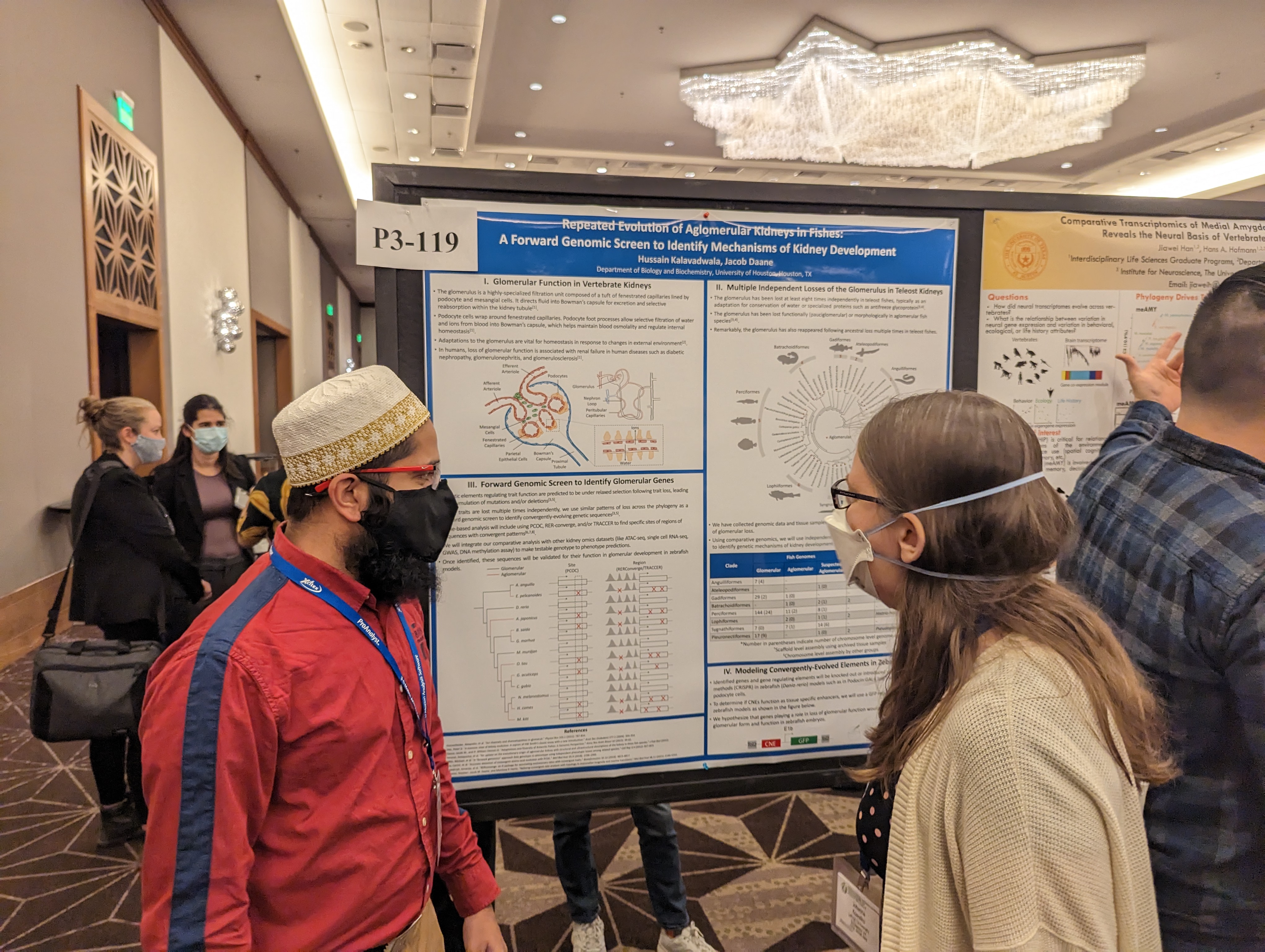New funding from NSF in collaboration with Mackenzie Gerringer at SUNY Geneseo to investigate the genetic and biochmeical mechanisms of adaptation of fishes to high hydrostatic pressure (#2407552)! We will assemble genomes from deep-sea fishes from the warm waters of Mediterranean trenches, perform comparative genomics across deep-adapted lineages, examine biochemistry of hadal proteins, and initiate hydrostatic pressure experiments in zebrafish embryos to identify pressure-responsive enhancer elements.
Congrats to Dan Wright on his NSF Postdoctoral Fellowship (NSF OPP-2420167)! This will support his work in the lab investigating the genetic mechanisms of renal adaptations and antifreeze-induced kidney plasticity in high latitude cods. In this project, Dan will be applying histology, single cell sequencing, comparative genomics, and zebrafish genetics to identify molecular mechanisms by which the glomerulus can induce and then recover from a seasonal functional disruption

Congrats to postdoc Olivier Larouche for securing a faculty position at Western Carolina University! There, he will continue his interdisciplinary work on modularity while bridging the fields morphometrics, comparative genomics and zebrafish genetics!

Lab photo Fall 2023!

New funding from NIGMS to investigate phylogenetic mechanisms of trait evolution in fishes (NIH 1R35GM150590-01). We will use convergent evolution of trait losses across fishes as a “forward genomic” screen to identify novel genetic regulators of evolved traits that resemble human disease states. We will also assess mechanisms of evolved resilience to kidney diseases through analysis of glomerular tissue plascitity in lungfishes and the evolution of compensatory gene expression in convergently evolving, freshwater aglomerular pipefishes.
Great presentations by the lab at the SICB meeting in Austin TX.


Congratulations to Olivier Larouche for winning the 2022 Daane Lab AI Art competition!

Building blocks of morphological change “by” Olivier Larouche
Ancient climate change events ~22 million years ago led to the freezing of the Southern Ocean and the local extinction of most fish populations surrounding Antarctica. One clade of fishes, the Antarctic notothenioids, were able to adapt to the increasingly icy conditions and ultimately diversified from a single common ancestor to ~120 species today. These 120 species are so successful that this family represents around 90% of fish biomass off the Antarctic continental shelf!
As a classic example of adaptive radiation in a marine environment, notothenioids are models for understanding adaptive radiations, physiological and biochemical adaptations to extreme environments, and adaptation to climate change. With a surge in genomic and transcriptomic resources for this clade, the past decade has revealed substantial insight into molecular mechanisms of notothenioid adaptation.
In this paper we review some of the insights gained from notothenioid biology in the omics era. We discuss how the notothenioid adaptive radiation is characterized by frequent chromosomal fusions, large-scale TE mobilization, and gene family expansions and contractions that are functionally associated with the physiological stresses of life at subzero temperatures. Unstable karyotypes and dramatic changes to mutation rate in notothenioids distinguish this clade from genetic trends observed in other fish radiations. As observed in other fish species flocks, gene flow may also play an important role in the genetic history of the notothenioids. Future research on the genetic architecture and developmental mechanisms of key traits in notothenioids will help to synthesize the principles and mechanisms of adaptive radiation.
Check it out the review article here: Adaptations and Diversity of Antarctic Fishes: A Genomic Perspective